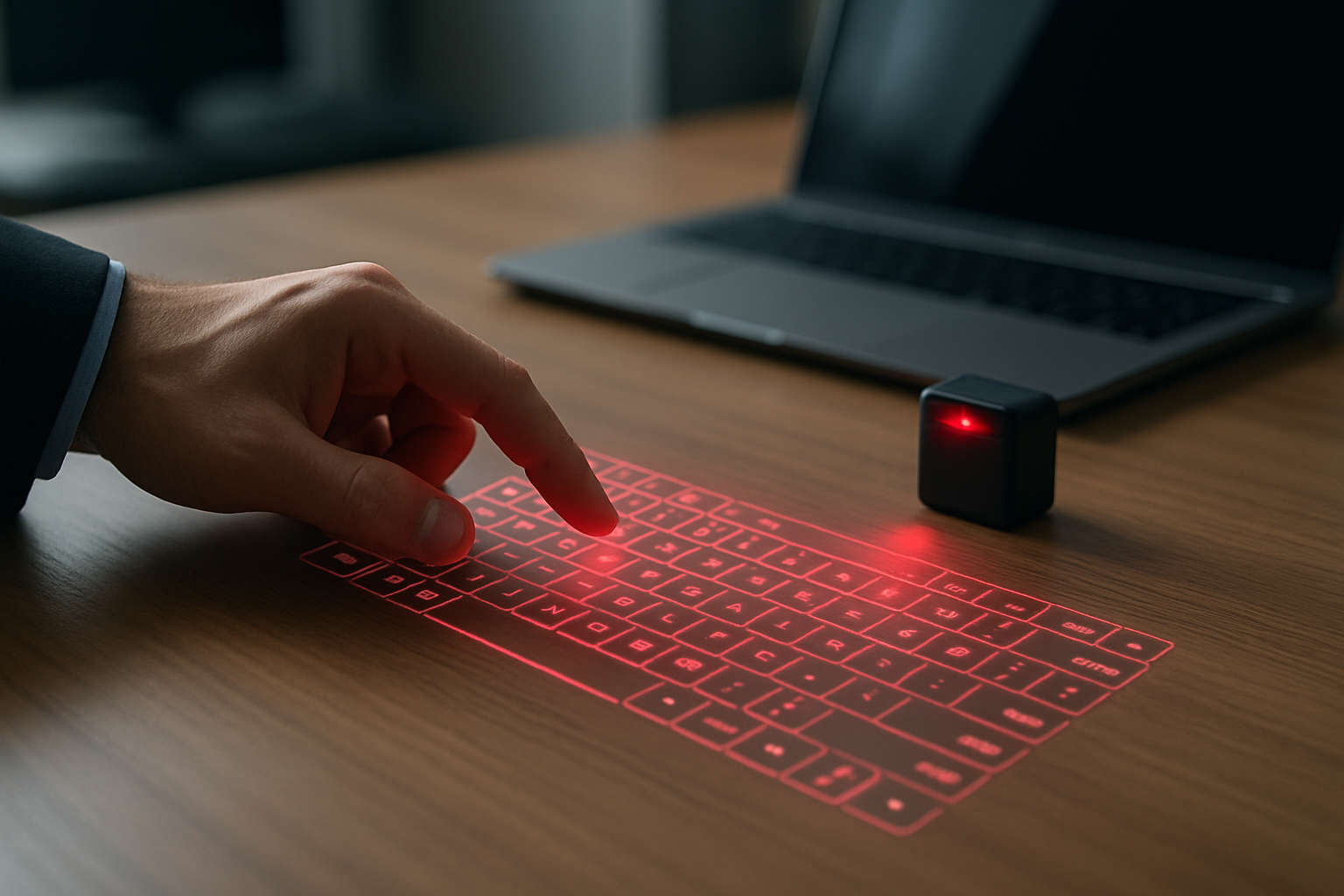Holographic Keyboards: Typing in Thin Air
In an era where technology continually pushes the boundaries of what's possible, holographic keyboards have emerged as a fascinating blend of science fiction and cutting-edge innovation. These futuristic input devices project a virtual keyboard onto any flat surface, allowing users to type without physical keys. As we delve into this captivating technology, we'll explore its potential to revolutionize how we interact with our devices and the challenges it faces in becoming mainstream.

How Holographic Keyboards Work
At the heart of holographic keyboard technology lies a clever combination of optics and sensors. A small projector emits a laser-generated image of a keyboard onto a flat surface. Infrared sensors then detect the position of the user’s fingers as they “press” the virtual keys. Advanced algorithms interpret these movements, converting them into digital inputs that are sent to the connected device.
The Benefits of Going Virtual
Holographic keyboards offer several advantages over their physical counterparts. Their portability is unmatched – when not in use, they disappear entirely, taking up no space in a bag or pocket. This makes them ideal for travelers or those working in tight spaces. Additionally, the lack of moving parts means they’re more durable and resistant to spills or debris, a common issue with traditional keyboards.
Challenges and Limitations
Despite their futuristic appeal, holographic keyboards face significant hurdles. The lack of tactile feedback can make typing less accurate and slower for many users, especially touch typists who rely on feeling key positions. Environmental factors like ambient light can also affect performance, potentially limiting their use in certain settings. Moreover, the technology requires a flat, uniform surface to function properly, which isn’t always available in real-world scenarios.
Current Market and Future Prospects
While holographic keyboards haven’t yet achieved widespread adoption, several companies are actively developing and refining the technology. Devices like the Celluon Epic and Serafim Keybo have garnered attention in tech circles, with prices ranging from $100 to $300. As the technology improves, we may see holographic keyboards integrated into smartphones, tablets, and other devices, potentially eliminating the need for separate peripherals altogether.
The Role of Haptic Feedback
To address the lack of tactile sensation, some researchers are exploring ways to incorporate haptic feedback into holographic keyboards. By using ultrasonic waves or air pulses, these systems aim to create the illusion of physical key presses, potentially bridging the gap between virtual and physical typing experiences. This development could be crucial in making holographic keyboards more appealing to a broader audience.
Holographic Keyboards in Specialized Applications
While consumer adoption remains limited, holographic keyboards are finding niches in specialized fields. In medical settings, they offer a hygienic alternative to physical keyboards, reducing the risk of contamination. They’re also being explored for use in industrial environments where traditional keyboards might be impractical or prone to damage. As the technology matures, we may see it adapted for even more unique applications.
The Future of Input Devices
As we look to the future, holographic keyboards represent just one facet of the evolving landscape of input devices. From gesture-based interfaces to brain-computer interfaces, the way we interact with technology is constantly changing. Holographic keyboards, with their blend of the tangible and virtual, offer a glimpse into a future where the lines between physical and digital continue to blur.
In conclusion, holographic keyboards stand at the intersection of innovation and practicality, challenging our perceptions of what a keyboard can be. While they may not replace traditional keyboards overnight, their potential to reshape how we interact with our devices is undeniable. As technology continues to advance, we may find ourselves typing on thin air more often than we ever imagined.





